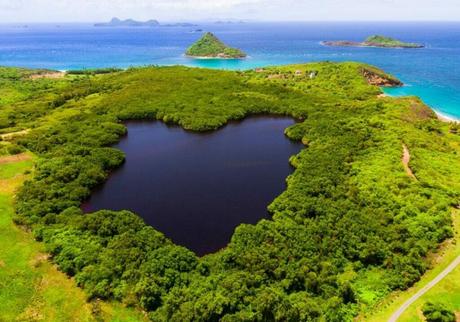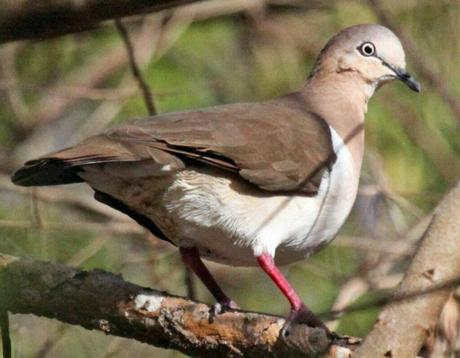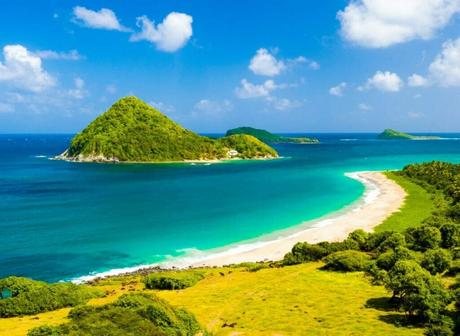Explore the breathtaking wonders of Grenada’s national parks and natural reserves, where adventure and natural beauty seamlessly intertwine.
Grand Etang National Park, with its dormant volcano, Mt. Qua Qua, and enchanting cloud forests surrounding the shimmering Grand Etang Lake, offers a paradise for hikers and nature enthusiasts alike. Traverse the diverse trails, immerse yourself in the vibrant rainforest, and encounter the captivating wildlife that calls this park home.
On the other hand, Levera National Park presents a coastal haven, boasting pristine beaches, a tranquil lagoon teeming with birdlife, and the awe-inspiring sight of leatherback turtles nesting under the moonlight.
Grand Etang National ParkCentral GrenadaRich flora & fauna diversity, volcanic crater lake, rainforest, hiking, birdwatching
Levera National ParkNorthern GrenadaCoastal wetlands, nesting grounds for leatherback turtles, sandy beaches, mangroves
Mt. St. CatherineNorthern GrenadaHighest peak in Grenada, montane forest, hiking, panoramic views
Sandy Island Oyster Bed Marine Protected AreaOffshore CarriacouOyster bed habitats, marine biodiversity, snorkeling, diving, coral reefs
Morne GazoSouthern GrenadaDry forest, endemic plant species, hiking, plant diversity observation
These national parks are not just ecological gems; they also provide a window into Grenada’s rich culture and heritage. Engage with friendly locals and embark on a journey that harmonizes adventure, conservation, and appreciation for the remarkable beauty of Grenada’s natural landscapes.
Grand Etang National Park

Nestled in the highlands of Grenada, Grand Etang National Park is a natural wonderland that deserves to top any adventure lover’s itinerary. Dominated by the dormant volcano, Mt. Qua Qua, this national park’s captivating allure goes beyond its lush landscapes. Its cloud forests and the shimmering Grand Etang Lake, a crater lake located at the heart of the park, promise not just scenic vistas but a myriad of opportunities for exploration.
There’s a wide array of hiking trails that navigate the dense rainforest and lead to stunning viewpoints. Experienced hikers might fancy the challenging route to Mt. Qua Qua’s peak, offering panoramic vistas of Grenada. But for those who prefer less strenuous endeavors, there are plenty of gentler trails meandering around the lake, each teeming with the distinctive sounds and sights of the rainforest.
The park is home to a variety of tropical trees, ferns, and orchids, so plant lovers are in for a treat. The Montane Cloud Forests around the lake are a naturalist’s dream come true, filled with towering mahogany and gommier trees. You might even stumble upon the vibrant reds of the immortelle, Grenada’s national flower, embellishing the verdant canvas.
The park’s wildlife is equally rich and diverse. As you venture deeper into the park, listen for the manic calls of the mona monkey, a species introduced to Grenada and now part of its unique fauna. You may also spot armadillos scurrying through the undergrowth or hummingbirds hovering around vivid blossoms.
Grand Etang National Park is a place to take in the lively culture of Grenada as well as the natural beauty of the island. The visitor center provides insightful information about the park’s ecology, but it also sheds light on the local traditions and history. Don’t miss the chance to interact with the friendly staff members who embody Grenadian warmth and hospitality.
Levera National Park

Levara National Park, sitting on the northern tip of Grenada, paints a different but equally fascinating picture. The park is a haven for beach lovers and outdoor enthusiasts alike because it has a stunning coastline, a tranquil lagoon, and a system of hiking paths.
The sandy beach of Bathway is a highlight, boasting an offshore reef that creates a natural pool, perfect for a refreshing dip. The view of Sugar Loaf, Green, and Sandy Islands from the beach adds to the picturesque setting. Also, turtle watchers, take note: Levera Beach is one of the most important nesting sites for leatherback turtles. Witnessing these magnificent creatures embark on their motherly mission under the moonlight is nothing short of magical.
The Levera lagoon is another spot teeming with life. A birdwatcher’s haven, the lagoon attracts many migrant and resident bird species. It’s a great place to see pelicans, herons, and other water birds in their native habitat because of the abundance of mangroves and seagrass beds.
For those who enjoy an invigorating walk, the park’s hiking trails wind through a mix of coastal and hillside terrain. Along these trails, you’ll encounter Grenada’s vibrant ecosystems, with myriad flora and fauna to discover. With every step, you’ll be rewarded with splendid views of the Atlantic Ocean or the intricate beauty of the tropical forest.
As in Grand Etang, the culture of Grenada is palpable here. The history of the region is intricately entwined with the lives of its inhabitants and their ties to the land and water. Engaging with local guides not only helps support the local economy but also offers a deeper understanding of Grenada’s conservation efforts and the significance of the park to the community.
Ecological Importance

Grenada’s national parks play a critical role in the island’s ecosystem. They act as vital havens for the country’s biodiversity, providing habitat for numerous endemic and native species. The lush forests are responsible for watershed protection, ensuring a clean water supply, while mangroves serve as crucial nursery areas for fish and other marine life.
These parks also serve as significant carbon sinks. Large volumes of carbon dioxide are absorbed and stored by the dense flora, reducing the effects of climate change. Therefore, protecting these places serves to both preserve biodiversity and advance global efforts to combat climate change.
The ecosystems within the parks provide essential services that benefit both the environment and the people. For instance, the coral reefs found in marine parks act as natural barriers against storm surges and erosion, protecting coastal communities. In addition, they support the local economy by engaging in fishing and tourism.
Importantly, these parks play a key role in scientific research. They act as real-world labs where researchers may examine everything from the behavior of secretive animals to the effects of climate change on tropical ecosystems. The knowledge gained can be instrumental in guiding conservation efforts in Grenada and worldwide.
Lastly, national parks in Grenada contribute to environmental education. They offer chances for both locals and visitors to learn about the value of the environment through a variety of outreach programs and activities, developing a sense of responsibility and stewardship.
Wildlife Preservation

Preserving Grenada’s unique and diverse wildlife is a primary objective of its national parks. Many different species, some of which are endemic and in grave risk of extinction, can be found on the island in its parks. Protecting these habitats is key to ensuring their survival.
Conservation efforts in Grenada are multi-faceted and ongoing. For example, national parks work closely with local communities and organizations to protect endangered leatherback turtles. These community-led initiatives help guard nesting sites and educate the public about the importance of these marine giants.
In the forests, efforts are underway to maintain and expand habitats for endemic species like the Grenada dove, the country’s national bird, and the critically endangered Grenada hook-billed kite.
Park management works tirelessly to mitigate threats like deforestation and invasive species that jeopardize these birds’ survival.
On a smaller but equally important scale, the parks protect innumerable insects, amphibians, and reptiles that play integral roles in maintaining ecological balance. No matter how minor, every species contributes to the complex web of life that supports Grenada’s diverse ecosystems.
These conservation initiatives are not just about preserving wildlife for the sake of biodiversity. They’re also about acknowledging the intrinsic value of these creatures. Each species has a role in the narrative of Grenada, contributing to the island’s rich natural heritage and the global biodiversity tapestry.
Tips for Travelers

It’s wonderful to explore Grenada’s national parks, but it’s crucial to keep in mind that these places are protected for a reason. As visitors, we should strive to leave as little impact as possible. Here are some pointers to make your trip more pleasurable and environmentally responsible.
Firstly, stick to designated trails when hiking. This not only ensures your safety but also aids in preserving delicate environments and halting soil erosion. Similarly, avoid disturbing wildlife. Observe animals from a distance and avoid feeding them as it can disrupt their natural diet.
When visiting during turtle nesting season, follow the guides’ instructions and use only permitted light sources to avoid disorienting the turtles. Participate in guided tours where possible, as these often contribute to conservation efforts and local community support.
Pack out what you pack in. Litter may affect wildlife and the environment in addition to being ugly. If facilities are available, recycle your waste. If not, bring it along when you go.
Lastly, respect local customs and listen to the advice of park rangers and guides. They’re not just there to enforce rules; they’re a wealth of knowledge about the park’s ecosystems and the island’s culture. Their insights can greatly enrich your experience.
Remember, responsible travel is about more than just enjoying nature’s beauty. It’s about making a difference in the protection of these natural gems so that future generations can enjoy them. The national parks of Grenada provide visitors more than just a chance to experience breathtaking scenery; they also provide an opportunity to learn about the fragile balance of nature and our responsibility to preserve it.
FAQ

Was Grenada National Park a rainforest?
Grenada National Park, particularly the Grand Etang National Park, features elements of a rainforest. The park’s lush landscapes, dense vegetation, and towering mahogany and gommier trees in the Montane Cloud Forests around Grand Etang Lake contribute to its rainforest-like characteristics. While it encompasses various ecosystems, the presence of cloud forests and abundant flora exhibits rainforest attributes.
What animals are in the Grand Etang National Park?
Grand Etang National Park is home to a diverse array of wildlife. Visitors may encounter the elusive mona monkey, introduced to Grenada and now part of its unique fauna. Additionally, armadillos scurry through the undergrowth, and hummingbirds gracefully hover around vibrant blossoms. The park’s protected environment also supports an assortment of insects, amphibians, and reptiles, all contributing to the delicate ecological balance.
Where do you see monkeys in Grenada?
Monkeys, particularly the mona monkey species, can be observed in various parts of Grenada, including Grand Etang National Park and Levera National Park. These curious and playful creatures are known to roam the rainforest areas, making encounters with them a delightful experience for visitors exploring Grenada’s natural wonders.

